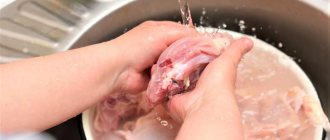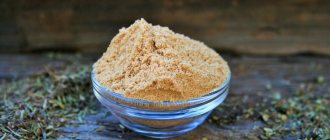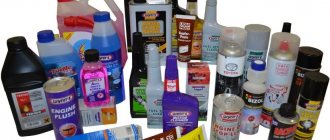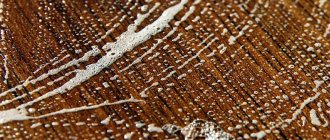Classic detergents
An interior or entrance door made of natural wood constantly requires cleaning.
To do this, gentle detergents are selected without abrasive particles that can damage the coating. The composition should not contain solvent, acid or other destructive substances. When choosing a cleaning product, you should pay attention to the inserts, which can be made of plastic, glass, or metal. In addition, manufacturers coat wooden canvas with varnish or paint; this also needs to be taken into account when choosing a cleaning product.
So, how to clean dirt from wooden doors:
- Silite is a universal product with a convenient spray, which is simply applied to the door leaf and washed off with a small piece of fabric. To add a beautiful shine, you can use a piece of newspaper or paper towel.
- Domestos and other plumbing cleaning products will perfectly clean plastic inserts from contaminants of various origins.
- Mister Muscle is suitable for cleaning varnished wooden surfaces, stained glass, glass, and metal inserts. To do this, purchase a universal product that can easily be applied to contaminated areas of the door using a sprayer. Dirt is cleaned with a regular soft cloth or napkin.
- Dishwashing detergent is a foamy product that is perfect for cleaning wooden interior doors. You can make a soap solution from it. The detergent can also be used in its pure form. Simply apply a small amount of gel to a soft sponge, rub the stain and wash it with a clean washcloth. The advantage of this method is the absence of streaks after cleaning.
- Pronto, Laska or Sana polish is the best product for removing grease stains, fingerprints, and dirt from doors without streaks. The advantage of such household chemicals lies in its composition. During cleaning, the wooden canvas hardly gets wet, so the risk of swelling of the natural material disappears. You can safely wash varnished wooden doors with polish.
- Wedge or Blink perfectly dissolves greasy stains and dirt from frosted and transparent glass on doors, because they contain ammonia. Such products can easily cope with primer that gets on the surface of a new door after its installation or renovation in the house.
There are many similar cleaners and detergents designed specifically for wood that can be found on the shelves of hardware stores. It is enough to choose the right composition, and the wooden door will delight you with its glossy shine and natural color every day.
Safe chemistry
To avoid damaging the door, you need to choose a safe product that is suitable for a specific coating.
Even if there are stubborn stains on the surface, undiluted acetone, abrasives, acids and solvents should not be used. Acetone, alcohol or nail polish remover diluted in a 1:1 ratio will help remove stains from coffee, tea and other drinks.
If the door is covered with oil-based paint, the safest solution is ammonia. The proportions depend on the degree of contamination - the more old the stain, the more concentrated the solution should be. Usually it is enough to dilute 2 tsp. ammonia in 1 liter of water. A more concentrated composition will help with stubborn stains: dilute 2 tsp in 1 glass of water. alcohol
Dishwashing liquid and regular soap or shampoo are excellent for cleaning doors. To reduce foam formation, you should use special furniture cleaning products.
During cleaning, you need to ensure that the cleaning agent does not come into contact with the rubber seals.
Standard door cleaning scheme
Regardless of which detergent was chosen for cleaning interior or entrance doors made of wood, the procedure is standard. To wash off small stains, you should perform some procedures in a certain sequence:
- Wipe the door leaf and door with a damp cloth.
- Apply the selected cleaning product to the entire wood surface.
- Rub the areas with difficult stains a little harder with a soft sponge.
- Leave the product on the doors for literally 5 minutes.
- Remove the foam with a damp cloth and remove any remaining moisture with a paper towel or microfiber cloth.
These simple steps will help clean dirt and grease stains from interior doors in just 10 minutes.
Types of coatings
Solid wood makes very durable door leaves, but at the same time quite expensive. Moreover, they require special care. Most doors consist of a wooden frame covered with chipboard or MDF sheets. One of the following coatings is applied on top:
- Lamination. The wooden frame is covered with textured paper impregnated with synthetic resins. Moisture-resistant, tolerates temperature changes well, and is resistant to mechanical damage.
- Veneering. A thin layer of real wood is applied to the frame, treated with a moisture-resistant compound and secured with varnish. Does not tolerate temperature differences and high humidity.
- PVC coating. Polyvinyl chloride is a plastic film coating. These doors are not afraid of moisture and scratches.
- Coloring. Applying paint to the canvas in several layers. Polyurethane or polypropylene enamel will protect the door on any basis and is resistant to moisture.
- Toning. Filling the pores of wood with one or several layers of varnish, possibly using dye.
Traditional cleaning methods
For minor stains, it is better to use gentle products. Many ingredients for their preparation can be found in the kitchen or in the medicine cabinet; this can be baking soda, table vinegar, lemon juice, ammonia, vegetable oil and much more. But only strong solvents, such as gasoline, can deal with serious dirt stains.
How to clean wooden doors at home, folk remedies:
- A vinegar and baking soda solution is a great way to remove stains from painted wood doors. To prepare it, add 20 g of soda, 15 g of hand washing powder and 50 ml of table vinegar to a liter of warm water. You need to wipe off dirt carefully using a soft sponge. A pure soda solution works great for removing grease on wooden surfaces.
- Citric acid or fresh citrus juice. To prepare the cleaning product, you will need 0.5 liters of warm water, a tablespoon of dishwashing detergent, 20 g of citric acid or 50 ml of citrus juice. After mixing all the ingredients, all that remains is to apply the liquid to the doors and dry the wood with a dry cloth. A solution of lemon juice and water (1:1 proportions) perfectly combats foreign odors and cat urine, which is important for people who have pets in the house.
- Ammonia quickly removes stains on painted doors. To do this, 10 ml of ammonia is diluted with 500 ml of warm water.
- Vegetable oil will help get rid of traces of whitewash on doors after repairs. To do this, 2 liters of water are mixed with 50 ml of product. The advantage of this cleaning method is the absence of streaks after washing. Sunflower oil also does a good job of removing traces of tape or glue. To do this, the product is applied to the areas of contamination in its pure form and left for 2-3 hours. Then wipe the surface with a dry cloth.
- A hair dryer and pencil eraser also work great to remove traces of glue or tape. It is enough to blow hot air on the dirty areas and rub them with an eraser or napkin.
- Fresh potatoes can clean old stains and grease from interior doors. It is enough to cut the root vegetable in half and rub the dirt with the cut. After this, you just need to blot the stain with a dry cloth.
- A mixture of clay and vinegar (1:1 proportions) copes well with complex stains on wooden surfaces. After this treatment, the door is wiped with soapy water and polished with a dry cloth.
After installing an interior or entrance door made of wood, foam may remain on the door leaf. You can eliminate it with kerosene or alcohol. Simply apply a small amount of product to the stain and wipe it off with a cloth. Using these solvents, you can wipe off oil-based or water-based paint that gets on the door leaf. Such products must be used carefully; they should be applied using a cotton pad or a small piece of cloth.
After wiping off the dirt, you should immediately wipe the wood with a dry sponge or cloth.
What can harm?
These products may damage the surface:
- Household chemicals containing acids and ammonia.
- Gasoline products. If there is glass on the door, then rainbow stains will remain on it. Gasoline can damage a laminated surface, leaving a scorched spot on it.
- Alkaline compounds.
- Abrasive cleaning products.
When cleaning doors, you should first wipe it with a clean damp cloth and then with a dry one. Powders, hard brushes and scrapers can damage the surface. Metal elements and fittings can be wiped with soapy water and then dried with a soft cloth. When cleaning and removing stains on doors, do not use fluffy fabrics - it is better to give preference to soft, lint-free wipes.
Further care
Constantly cleaning entrance or interior wooden doors can damage the protective layer. Even regular use of gentle detergents is fraught with the appearance of scratches and chips, because wood is a capricious material. At least once a week, the housewife will have to use radical methods to care for wood products.
The most popular means include:
- A polish that perfectly fights not only dirt, but also small scratches. This product is intended for caring for wooden surfaces, removing dirt and greasy stains.
- Wax pencils are an excellent tool for restoring damaged wood. For these purposes, you can also use ordinary wax, which copes well with scratches, cracks and chips. Of course, it is better to use such products only for doors that are not varnished, since their use has a certain sequence. First you need to sand the damaged areas with fine-grained sandpaper. After this, wax or a pencil is rubbed into the crack, scratch, or chip. The last stage of restoration is to grout this area with a piece of soft cloth.
The use of wax is a step that often precedes the coating of a wooden door with varnish. Thanks to the soft texture and transparency of the product, you can smooth out damaged areas and preserve the natural color of the wood.
Varnishing a wooden surface
After the natural wood door has been polished and leveled with a wax pencil, you can begin to coat the surface with paints and varnishes. Instead of wax, you can also use nitro varnish in the form of a spray, which has the same effect, but dries in literally 5 minutes.
The advantage of varnish coating is the ability to preserve the original appearance of the product. The transparent product allows you to preserve the natural grain of the wood and create a reliable protective film. Interior doors should be updated in this way as needed (after deep scratches or cracks appear).
How to clean plastic?
How to clean plastic? It's very simple. It is enough to use a soap solution. You can give preference to the other compositions listed above, but in most cases there is no need for this, since all dirt can be easily wiped off.
You can also use vinegar solution, liquid washing powder, soda. Special sprays and cleaning products for plastic surfaces are effective for cleaning.
It is important to note that plastic cannot be rubbed, washed with metal sponges, or rubbed with a brush. This leads to its damage and the appearance of microcracks, into which dirt subsequently gets clogged.
Preparing the surface for washing
It is necessary to carry out wet cleaning of walls as they become dirty, but at least twice a year. Experienced housewives advise doing this in spring and autumn. For the first time after a long winter, when the heating was on and air currents carried dust throughout the house. The second was after the summer, when dust and dirt particles got in from the street through open windows.
Before you start washing, you need to make sure that the wet coating can dry quickly. That is, the house is warm enough and there is no excessive humidity. Otherwise, the result can be unpleasant stains, dampness and even mold. Before washing painted walls, preparatory work is carried out.
Preparing the workspace
We remove all photographs, posters and paintings hanging on the walls. We do the same with any other decor. We mark the released hooks and nails so as not to injure our hands on them. To do this, we attach small pieces of bright fabric to them. We move the furniture to the center of the room so that it does not interfere with free movement.
Protecting the floor from moisture
We lay film or thick fabric along the baseboards. It will protect the floor covering from the unwanted effects of dirty water. If necessary, protect furniture in the same way by covering it with film.
Removing dust from the coating
We carry out dry cleaning, completely removing dust from ceiling skirting boards and walls. The easiest way to do this is with a vacuum cleaner turned on at medium or low power. The floor brush must be removed and a small attachment with a flat base installed. You can use a mop with a clean cloth on it.
How to remove greasy stains from MDF doors?
To do this, you can use improvised means. There is no need to purchase expensive liquids. Wash the raw potatoes and cut them in half. Rub the cut side against the dirt. Let the potato juice dry and wipe the surface with a soft cloth.
This method is great when there are old greasy stains on MDF doors with a varnished surface. If there are any streaks left after the procedure, they can be removed using regular talc or baby powder. Apply a little powder to a cloth and rub away the stains.











